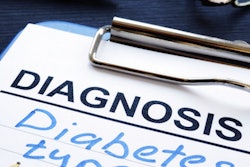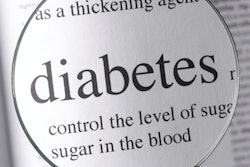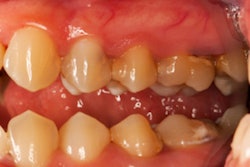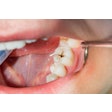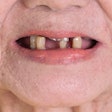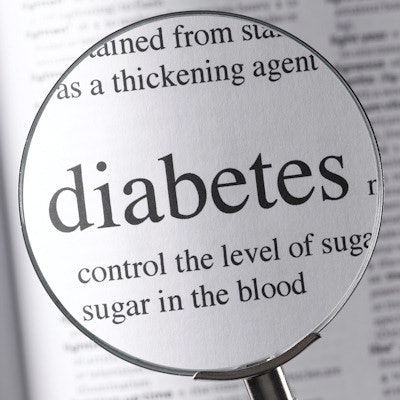
Are men and women with type 2 diabetes just as likely to have periodontal disease? Periodontitis and type 2 diabetes share a connection, but men and women are diagnosed with them at different rates, so investigators sought to determine whether there was a link.
They analyzed data from the National Health and Nutrition Examination Survey (NHANES) from 2009 to 2014 and found a significant association between type 2 diabetes and moderate-to-severe periodontitis in men that persisted even after various statistical adjustments. The link, however, was not present in women.
"Dental providers need not only be aware of whether their patients have diabetes or not but also need to use gender-based approaches for those patients who are diabetic and obese, as females generally have healthier behaviors in oral hygiene compared with their male peers," wrote the authors, led by Ying Liu, PhD, an assistant professor in the department of biostatistics and epidemiology at East Tennessee State University in Johnson City (International Dental Journal, May 22, 2018).
What's sex got to do with it?
Individuals with diabetes are three times more likely to have periodontitis than those without it, with the presence of diabetes negatively affecting the immune and inflammatory response, the authors noted. Additionally, periodontitis treatment can improve metabolic and blood sugar control in people with type 2 diabetes.
At the same time, men have a higher prevalence of periodontal disease than women, but previous studies have not examined the differences between men and women in the relationship between periodontitis and diabetes.
To that end, the researchers of the current study analyzed multiple NHANES datasets from 2009 to 2014. They included dentate individuals ages 30 and older who completed periodontal exams, body measurement, laboratory tests for diabetes, and interviews on demographics and related health issues.
“Dental providers ... need to use gender-based approaches for those patients who are diabetic and obese.”
Data estimating the probability of moderate to severe periodontitis among adults without diabetes indicated that its prevalence was higher among males compared with females regardless of age or diabetes status. Previous analysis of NHANES 2011-2012 data found that diabetes prevalence was 1.6% greater in male than female individuals, while in NHANES data from 2009 to 2014, moderate to severe periodontitis prevalence was 11.95% higher in adult males than females.
The researchers combined data from individuals with moderate and severe periodontitis with data from those individuals with two or more interproximal sites not on the same tooth with periodontal pocket probing depth of 5 mm or greater or clinical attachment loss of 4 mm or greater.
Survey data do not distinguish between type 1 and 2 diabetes, although the data excluded those more likely to have type 1 diabetes by not including those diagnosed with diabetes before age 25 or who took insulin.
The researchers included the following data in their analysis:
- Use of dental floss or other device to clean between teeth
- Use of mouthwash
- Body mass index (BMI)
- Health insurance coverage
- Age
- Sex
- Race/ethnicity (Hispanic, white, black, or other)
- Socioeconomic status as represented by education level and family income
They found that just over 36% of study participants with type 2 diabetes also had moderate to severe periodontitis compared with almost 23% of those without diabetes. Moderate to severe periodontitis was more prevalent among those who were age 60 and older (almost 34%), male (almost 31%), not white, had lower income (more than 36%), had not graduated from high school (almost 40%), and did not have health insurance (just over 36%).
These findings were in keeping with previous research. Further analysis with adjustments for socioeconomic status indicated that all the variables except for BMI were significantly associated with moderate to severe periodontitis.
The presence of type 2 diabetes remained significantly associated with moderate to severe periodontitis in men but not women after statistical adjustments for BMI, health insurance, and dental behaviors.
The researchers also found differences between genders in BMI and mouthwash use, with BMI negatively associated with moderate to severe periodontitis in women and mouthwash use significantly associated with the condition in men. However, according to previous research, obesity is associated with periodontal disease and systemic inflammation, and obese individuals are more likely to have type 2 diabetes.
"The underlying mechanisms that potentially link periodontitis, obesity, and diabetes merit further investigation," the authors wrote.
Association doesn't prove causation
The authors cautioned that the data they used only allowed them to provide evidence of associations and not causation. Additionally, the results may have been affected by the following:
- Full-mouth periodontal exam data excluded third molars
- Exclusion by the researchers of missing data
- Classification of diabetes based on measurements taken at only one visit
Based on their results, the researchers speculated that female patients are more likely than male patients to follow the recommendations of dentists, and they noted gender-specific prevention strategies for periodontal disease and oral health would be useful, especially in male patients with diabetes or at high risk for developing diabetes, such as those who are obese.
"Findings from the current study support the heightened importance of both self-management of diabetes and home oral hygiene to prevent or slow the progress of periodontal disease, especially in males with diabetes," the authors concluded.




